Writing Fast-Paced Action Scenes by Rayne Hall
In scenes with fast action – such as chases and fights – your writing style needs to reflect the speed. The words you choose, and the way you structure your sentences, can create a fast, exciting pace which takes the reader’s breath away. Sentences The length of your sentences creates the pace of your scene. In a fight scene, sentences need to be short, especially when the action speeds up. If a sentence is more than twelve words long, split it into two shorter ones. Some sentences can be very short indeed: He leaped. She kicked. Blades clanked. To vary the rhythm, insert the occasional medium-length sentence, but avoid long ones with many clauses. When the action happens really fast, you can use sentence fragments instead of complete sentences; For example: He had to get through to the castle. Had to reach that door. He hacked, swung, slashed. Five paces left. He leaped. Use this trick sparingly, only for the fastest-paced moments, since sentence fragments become tedious if overused. Words Short words create a fast, sharp rhythm, so use the shortest available word for the job. Words with single syllables are best. Two syllables are ok, three syllables are so-so, and anything longer doesn’t belong in a fight scene. When revising your fight scene, replace long words with short ones. Instead of immediately write at once. Instead of endeavour write try. Instead of indicate write point at. Instead of investigate write check out. Verbs (hack, swing, slash, kick) convey action and create a fast pace. You can use several verbs in a sentence, for example: She bit, she scratched, she screamed. or They slashed and sliced, they blocked and parried. Simple Past Tense (hacked, swung, slashed, kicked) is the best for fast-paced action. Avoid Past Perfect Tense (had hacked, had swung, had slashed, had kicked) because it’s a pace-killer. Be careful about using the ing-form of the verb (present participles and gerunds: hacking, swinging, slashing, kicking). Although it conveys immediacy, it sounds soft and can spoil the pace, so use it sparingly. Adjectives (blunt, strong, irresistible) slow the pace, so use only a few. Adverbs (bluntly, strongly, irresistibly) slow the pace enormously, so you may want to avoid them in your fight scenes. Use as few conjunctions and link words (and, but, or, when, then, after, before, while, because, in order to, therefore, thereby, as) as possible. For example, instead of He grabbed the liana with both hands, and then he swung across the stream and landed in the mud. write: He grabbed the liana with both hands, swung across the stream, landed in the mud. Instead of After that, he raised his arm, thereby warding off blows. write: He raised his arm to ward off blows. Euphonics T, K and P sounds create a fast pace and a sense of aggressiveness, so use lots of them in action scenes. For example: Instead of swallow write gulp. Instead of hold write grip. The best sound for chases, races and anything...
Read More(Writer’s) Relief For All Your Submission Aches And Pains
by Writer’s Relief Suffering from submission fatigue? Writer’s Relief is happy to be here on Virtual Writers today to tell you a little bit about how our system helps creative writers make better, more professional, more efficient submissions to literary agents and editors. The Beginning of Writer’s Relief Writer’s Relief was born in 1994 when a friend asked Ronnie L. Smith to manage her poetry submissions for her. Since then, we’ve been helping poets and short prose writers successfully submit their works for publication in literary journals. We’ve also been helping novelists, memoirists, and other book authors connect with literary agents so they can get their books published at major presses. How We Work We can handle as much or as little of the submission process as our clients like. Some clients want us to do everything—from proofreading and formatting, to researching the best-suited literary agents or editors, to putting submissions in the mail (or submitting online), to tracking editorial feedback from readers. Other clients just want our expert targeting; we do the research and provide a handpicked list of the best markets for a given work. Either way, writers pay a flat fee for this ultra-specialized secretarial and consulting service. Visit our website to learn more about our various services, and find the one that will solve your submission woes. What Can Writers Get For Free? Writer’s Relief offers many, many freebies on our website. These are just a few of the free writers resources that can improve your submission strategy: Free Publishing Tool Kit Free Tutorials For Online Submissions Free Subscription to the hot publishing leads and tips in Submit Write Now! (30,000+ writers currently subscribe) Plus, we also host regular contests, giveaways, and games on our social networks like Facebook and Twitter. So stop by and say hello today! Writer’s Relief has been helping creative writers make better, more effective submissions since 1994—and we’re still going strong. Thanks so much to Virtual Writers for hosting us today! QUESTION: What part of the submission process do you find most burdensome? Picture Credit: Colin Adamson This article was first published at Author Essentials on July 30th,...
Read MorePoetry and Craft by Timothy Victor Richardson
Poetry, at its best, goes beyond anything we can put a finger on to something we can only say has an emotional force we can’t forget. That is why I believe it is a sacred art form and why it has lasted for so many centuries. As with all the arts, it’s the feeling a poem gives us we can’t forget and want to feel again. It’s the reason we return, again and again, to lines that effectively capture something in the deeper reaches of the collective soul. In attempting to reach this deeper “something”, it greatly helps to master all the tools and techniques the craft of poetry encompasses. Whether writing dialogue for a play, prose, free verse or formal poetry, it’s all enhanced by mastering the craft. The craft of poetry’s basic elements are form, meter, rhythm and rhyme. Forms like sonnets, villanelles and sestinas are like human bodies that can perform who knows how many different kinds of dance. While the content of a dance or a poem can be old and stale or new and exciting, the instrument (the body or form) can be used to express anything from the past, present or future. Any whole body is capable of performing any kind of dance. All poetry, all art has a form. It’s just a question of how well the form suits what the poet seeks to realize. Meter describes where the accents fall and how many unaccented syllables there are between them. As the poet, Timothy Steele, points out in “Prosody for 21st-Century Poets”, because different words carry lighter or heavier accents, the variety of rhythms that can be superimposed on any given meter is endless. A poem’s meter is like a musical time signature. How many different tunes can be written in 4/4 time, for instance? Any number. How many lines can be written in iambic pentameter, say? The answer is the same. What makes one line better than another (among many other things) is how well the poet harmonizes meter and rhythm. When they are working together, a memorable line is more likely to result. However constraining meter might feel when a poet first uses it, with practice, any discomfort wears off in time. Practicing with meter using different rhythms is like playing a musical instrument. At first, nothing feels more clumsy than finding the right words within the strictures of meter. Like any other discipline, however, practice and experience make it feel far more natural until it becomes second nature. After all, no one expects a neophyte skater to leap and spin with perfect form and it’s no different with meter and rhythm. The more conscious you are of them, the better the effects you produce will be. People often remember the melody of a song even when they’ve forgotten the words and it works the same with poetry. The rhythm of a line is recalled more readily than its words and that’s due to the feeling it instills. Different meters...
Read MoreSome of the Most Habit-Forming Things are Good for You! by Ginger Jorgental
Virtual Writers holds a daily Writers’ Dash exercise (Monday-Friday at 6am and 6pm PT) that benefits both students and writers by expanding their knowledge of the English language. According to Sue Dymoke (2003), part of the instructional process of creative writing is to attempt the usage of new words. Other aspects of creative writing development include the initiation and expansion of ideas as well as the process of planning and reviewing (Dymoke, 2003). By drawing from personal reservoirs of knowledge, each writer gains insight into his or her world view. The ongoing exchange of dialogue and support at the dash helps improve the self-confidence that so many writers need. Through the absorption of content found in each other’s writings, participants fuel one another’s progress while at the same time garnering value by observing a multitude of individual writing styles. Within the constraints of a 15 minute time limit, writers are faced with the challenges of composition: form, word usage as well as content (Dymoke, 2003). They must make decisions about the tone of their writing, the delivery of their words, and at the same time be mindful that others will read what they have written. With the option to post their Dash pieces to the Virtual Writers blog, there is an immediacy of exposure which can benefit writers and that engenders confidence amongst peers. Also, by making writing habit-forming, the daily Dash supports a diet rich in creative writing. Writing on a daily basis instills discipline, while at the same time this routine allows an immense inborn quality to emerge. Writing gives many lives new meaning. I’m sure you will find that exploring creative avenues will allow you to delve into depths which cannot be explored in the confines of reality. And after a period of time writing in this way, many people find that they have amassed quite a large diary of their own work, much of which can be edited and reworked for the purposes of self-publishing. For those of you who are considering self-publishing, I encourage you to explore your options and seek out publishing partners who are reputable. In North America, a high rating from the Better Business Bureau is indicative of the propensity to conduct sound business. Seek out consumer evaluations and research all registered complaints against a given company before signing up. Price points in self-publishing include the initial publication package, which may include services such as copyright registration, book sellers insurance (in case of returns), cover design and copy editing (line editing for spelling and grammar only). Look for e-publishing as well as traditional product offerings inclusive in the package. Additional costs include: high-pixel image for the front cover, content editing (highly recommended!), and promotional materials. Consider everything that will go into the making of your book and create a project plan that includes registration of your own URL and website construction and maintenance. In a highly competitive market, Indie writers need to find platforms to showcase their talent. Demonstrating the quality of your work...
Read MoreHow To Deal With Rejection by Lucy V Hay aka @Bang2write
Any writer who believes s/he can go from “aspiring to published” writer without experiencing the bitter sting of rejection is in for a shock. Whether you want to be published the traditional way or go the indie route, rejection is part of the journey, whether it means being unable to get past “the gatekeepers” or a reader “advising” others on social media to actually stay away from your work! So, as we’ve established: rejection hurts and it’s going to happen, regardless of how brilliant a writer you are. Even the greats remember their first rejection letters and even still get rejected from time to time. The key is knowing how to deal with it, so here are my steps on turning rejection into a positive, rather than negative, experience: 1) Walk Away Just been rejected? Don’t obsess over it, reading the email or letter over and over. Do something else to take your mind off it – ANYTHING. Outline a new project; go for a walk; eat some chocolate; phone a friend. Whatever works for you (bar airing your grievances online on social media!). All that matters at the moment is the decision is in and it’s a negative. So give yourself some time to process the disappointment and calm down, before you do anything else. 2) Read between the lines No feedback other than a “thanks, but no thanks”? Then the journey is over for that opportunity. There’s absolutely no point second guessing what could have “gone wrong” … Maybe nothing did, it just so happens it wasn’t “right” either. That can happen. As a reader for literary agents and competitions, I have seen this happen to LOTS of great writing. That does NOT mean your submission was automatically crap. So chalk it up – THIS TIME – and move on. Don’t dwell. You have some feedback? Don’t ignore it. Remember, all industry pros are mega busy, so if they have taken the time to give you some feedback, they must have found your submission notable *in some way* and there’s a strong chance they want to help you be more successful “next time”. Honest guv! Now how this works may depend, so this is where as writers we need to really read between the lines: i) Your feedback seems really negative. If the industry pro seems harsh or negative about your work, talking about the concept behind it or the characters being clichéd, “tropey” or familiar, take note. This is a clue that the industry pro has seen ideas or writing *like* yours A LOT. Obviously in this crowded marketplace that’s not a good thing, because your writing needs to stand out. So what can you do to make your concept, characters or writing more UNUSUAL? Do some research re: your target audience and what has gone before already, don’t just trust to instinct. ii) Your feedback seems really positive. Somewhat ironically, my Bang2writers often find positive feedback in rejections even MORE confusing: if that industry pro...
Read More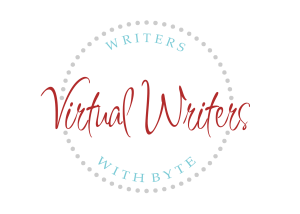



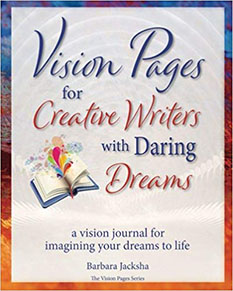
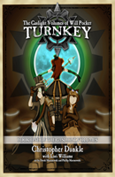
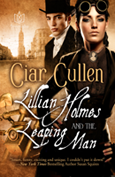
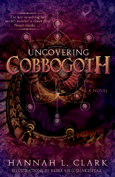
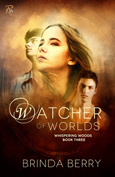
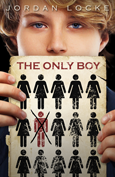
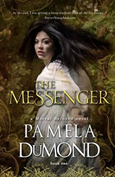
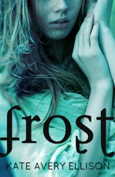
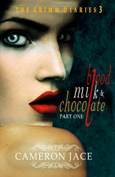
Follow Me